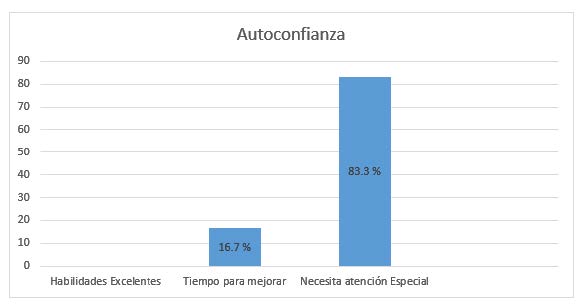Diagnosis of self-confidence in basketball players’ shots
Main Article Content
Abstract
Self-confidence is a psychological variable widely studied in the sports field that affects the athlete's performance. In the last 3 years, the effectiveness of medium-distance rim shots in the men's national preselection basketball players has been below the expected forecasts, resulting in the loss of important matches and it was not possible to specify what influence self-confidence had on this results. Therefore, the objective of the research that led us to the preparation of this article was to determine the current state of self-confidence in medium-distance shots in basketball players of the men's national preselection. To do this, observation, interview and the modified Loher test were applied to athletes from this team. The main results showed that most of the athletes need special attention to improve this ability, in other cases time to improve it and in none does it appear an excellent functioning of it. It is concluded that in the medium distance shots, difficulties appear in the self-confidence of the athletes studied.
Downloads
Article Details

This work is licensed under a Creative Commons Attribution-NonCommercial 4.0 International License.
Those authors who have publications with this journal, accept the following terms of the license Attribution-NonCommercial 4.0 International (CC BY-NC 4.0):
You are free to:
Share — copy and redistribute the material in any medium or format
Adapt — remix, transform, and build upon the material
The licensor cannot revoke these freedoms as long as you follow the license terms.
Under the following terms:
Attribution — You must give appropriate credit, provide a link to the license, and indicate if changes were made. You may do so in any reasonable manner, but not in any way that suggests the licensor endorses you or your use.
NonCommercial — You may not use the material for commercial purposes.
No additional restrictions — You may not apply legal terms or technological measures that legally restrict others from doing anything the license permits.
Notices:
You do not have to comply with the license for elements of the material in the public domain or where your use is permitted by an applicable exception or limitation.
No warranties are given. The license may not give you all of the permissions necessary for your intended use. For example, other rights such as publicity, privacy, or moral rights may limit how you use the material.
References
Buceta, J. M. (1996). Psicología y lesiones deportivas: Prevención y recuperación. Madrid: Dykinson
Buceta, J. M. (1999). Psicología del alto rendimiento deportivo. Madrid: Real Federación Española de Fútbol.
Buceta, J. (2004). Estrategias psicológicas para entrenadores de deportistas jóvenes. (1ª. Edición). Madrid: Editorial Dykinson
Buceta, J. M. (2014). Intervención psicológica en deportes de equipo. Comunicación presentada en la Conferencia correspondiente a las XVII Jornadas de Actualización en Psicología del Deporte. Madrid: UNED.
Cruz, J. (1997). Factores motivacionales en el deporte infantil y asesoramiento psicológico a entrenadores y padres. En J. Cruz (Ed.), Psicología del deporte (pp. 147-176). Madrid: Síntesis.
Enríquez-Caro, L. C. (2017). Estudio del rendimiento psicológico auto percibido de la selección de fútbol sub 14 de Manabí. Universidad Técnica De Manabí, Portoviejo, Ecuador Pol. Con. (Edición núm. 13), 2 (11), 130-140. ISSN: 2550-682x
Enríquez-Caro, L. C.; Calero, S.; Castro, I. E. y Alcívar, R. (2017). Estudio metódico del rendimiento psicológico de balonmanistas profesionales sobre la base del test de Loehr. Revista Cubana de Investigaciones Biomédicas, 36(2). ISSN: 1561-3011
Gómez-López, M.; Granero, A. e Isorna, M. (2013). Análisis de los factores psicológicos que afectan a los piragüistas en el alto rendimiento. Revista Iberoamericana de Diagnóstico y Evaluación Psicológica, 35(1), 57-76. ISSN: 1135-3848
Hernández-Sampieri, F.; Fernández, C. y Baptista, P. (2014). Metodología de la Investigación, 6ta edición, Editorial mexicana, Reg. Núm. 736, México D. F.
Loehr, J. (1990).La excelencia en los deportes (Cómo alcanzarla a través del control mental). México: Editorial Planeta.
López-Torres, M.; Torregrosa, M. y Roca, J. (2007). Características del «Flow», ansiedad y estado emocional en relación con el rendimiento de deportistas de elite. Cuadernos de Psicología del Deporte, 7(1). ISSN: 1989-5879
Reyes, M.; Raimundi, M. J. y Gómez, L. (2012). Programa de entrenamiento en habilidades psicológicas en jugadoras de voleibol de alto rendimiento. Cuadernos de Psicología del deporte, vol. 12, no.1 (junio) 9-16. ISSN: 1989-5879
Tsopani, D.; Dallas, G. y Skordilis, E. K. (2011). Competitive state anxiety and performance in young female rhythmic gymnasts. Perceptual & Motor Skills, 112, 549-560.DOI: 10.2466/05.09.20.pms.//2.2.549-560
Vealey, R. S. (1986). Conceptualization of sport confidence and competitive orientation: Preliminary investigation and instrument development. Journal of Sport Psychology, 8, 221-246.DOI:10.1123/jsp.8.3.221
Vives, L. y Garcés de los Fayos, E. J. (2002). Autoconfianza y deporte: Aportaciones de la psicología del deporte para su optimización. En: Olmedilla, A.; Garcés de los Fayos, E.J. y Nieto, G. (Coords). Manual de Psicología del Deporte (pp.235-257). Murcia: Diego Marín.
Weinberg, R. S. y Gould, D. (1996). Fundamentos de psicología del deporte y del ejercicio físico. Barcelona: Ariel

